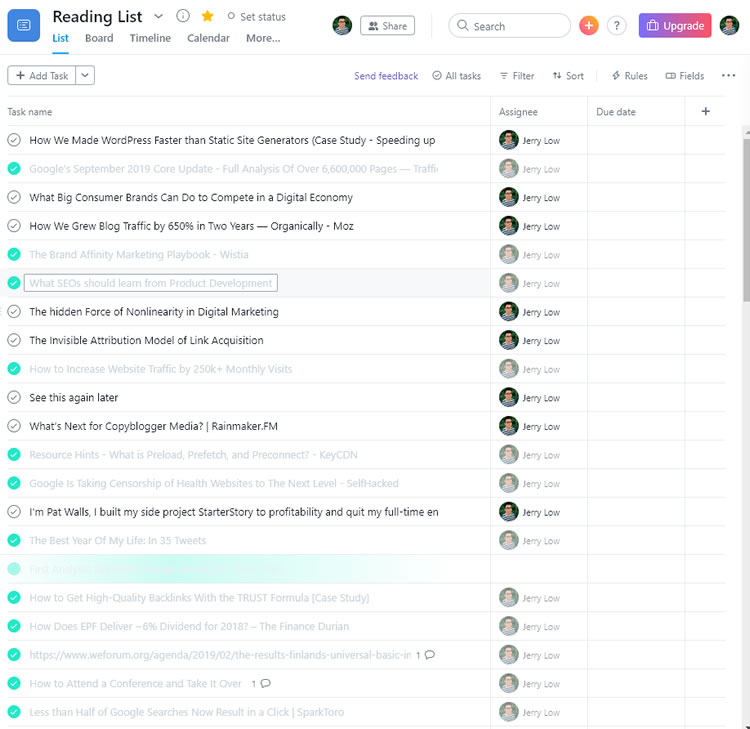I hate writing. Writing essays in English is definitely the most hated task in my school days. And I bet a lot of your Content writer is like me. Unfortunately, A good piece of blog content is the backbone of blogging success. And this very difficult task for a blogger to create great blog content. Below are some tips to create high-quality blog content for the website. Befor starting writing deeply research your choice of the topic. Decide the efficient way to provide the best quality content to your audience. Start writing blog content and make sure your content for people and google.
As much as I hate writing, I have written hundreds of articles on my websites and blogs in the past. I have also worked with dozens of freelancers and professional writers from different countries on various projects. The truth is that you can really produce excellent content online without the love of writing.
In this post, I will reveal a powerful technique in six simple steps and all the specific tools used to regularly create good online content. Keyword Research: A Step-By-Step Guide to Keyword Research (Best Keyword Research Tools Compared).
Let’s start!
6 Steps to Write Great Blog Content For SEO
#1. Good Reference List

First, you will need to have a list of good reference blogs (or the website or iconic person) in your industry.
For example, if I am writing an article about SEO: SEO Book, Distilled Blog, and Search Engine Land, some excellent examples will be my reference sites; Tim Soulo, Rachel Costello, Marie Haynes, and Rand Fishkin would be my people to follow. Get used to regularly reading people’s blogs or Twitter / LinkedIn actions. I read mine at least once every two days, but I know that some boys do it more frequently.
Enjoy the benefits of content management tools: the most efficient way to ensure a constant flow of information from blogs or shared people. Personally, Asana and Twitter work best for me. I use Twitter to follow the actions of my favorite people (they are like my virtual mentor) and use Asana to record my readings and share them with my team.
You may be using other tools: Evernote, emails, Chrome Reading List, Facebook, Flud News, Pinterest, and that’s fine. The conclusion is to have a systematic way to track your reading and create a reference list for your writing.
If you’re wondering how many blogs or people to follow (how the Internet noise filter is important today), I don’t set any limits on my list, but I barely exceed thirty. I also suggest that you review and delete your list once every six months (believe me, no matter how active they were initially, some blogs will be inactive after a while). Also, CheckSEO Tools: Ultimate List to Optimize Your Website
#2. Create Interesting Titles
Now, have this list of blogs or people to follow; and you are reading regularly; It is time to do homework.
Write the titles of articles with a high social score (for example, 100 retweets or 200 likes on Facebook or more) in a simple notebook or an Excel spreadsheet. These titles are themes that resonate well with your target audience. Then we will build our content around these ideas later.
I use Asana Chrome Extension to crop everything I’ve read online and use a simple Google spreadsheet to write down titles/ideas on which I want my team to work. I like how my Asana Chrome Extension works perfectly to crop web content and synchronize my reading logs between my desktop, laptop, and tablet. I recommend you try it if you don’t have one. Check What’s On-Site vs. Off-Site SEO: Difference And How to Improve?
#3. Filter and Choose Popular Titles
Steve Jobs once said:
Good artists copy, great artists steal*
This principle guided the late Steve Jobs in the creation of Macintosh and in the creation of the most valuable company in our history. It is a principle that we can also use when it comes to writing excellent content online.
When compiling a list of popular titles related to your industry, you should now have an “inspiration catalog.” Examine the list weekly and choose at least one as the theme of the week. Select topics that you are particularly passionate about or experienced. The idea is not to steal all the author’s writing. Instead, what we want are good titles that we can improve even more with our different experiences or points of view.
- Do you have any experience with the chosen topic?
- Do you totally disagree or agree with the opinion of the original author?
- Can you improve the original articles with more examples or facts?
- Do you have more suggestions on tools and other resources for authors?
If your answers to the above questions are mainly affirmative, you probably have some good ideas on what to write next.
#4. Headlines, Bullets, And Details
I will assume (you should!) That you now have a handful of titles to write. Finally, it is time to write really.
Like what my English teacher taught me about writing on school days, the most effective way to find an article is to use
- Sketches and markers to structure your article; and
- The five W and one H (who, when, what, where, why, how) for the details.
For example, when I start writing generally I do the following thing in a specific order.
Use simple headings to describe paragraphs; Use bullets to determine what each paragraph will contain. Adjust the titles and subtitles to be more attractive. Assign the structure of the article to ensure that it flows smoothly; Change the order of the paragraphs if necessary. When the main framework of the article is complete, complete each paragraph with details on who, when, what, where, why and how.
Having a set of sample titles (or some call it hacks) helps a lot. Take your time: adding some pressure to your writing can help.
Occasionally, I set goals like “finish this article every 1,500 hours” and use my phone’s timer to force me to write within the predefined deadline. As you are writing efficiency, I think we should be a little more time-sensitive and specific to our goals. Read WordPress SEO: 13 Way Rank at the Top of Google
#6. Added value: Videos, Images, Audios, Graphics, etc.

As we write and publish our content online, it makes no sense to limit ourselves to words. Like what you are seeing in this blog post, graphics, videos, photos, presentation slides, and audio should be added to your article.
Personally, I love photography, so I have no problem getting high-resolution original images from my own collections. But that’s fine if you don’t like to take pictures, there are many good places where you can get beautiful images: Stock Snap, Morgue Archive, and Image Search, just to name a few.
As for the videos, YouTube and Vimeo are two good sources.
#6. Proofreading, Posting, and Review.
Confession: I don’t really do much proof of this in my work. Do you remember that I hate writing a lot? Instead of wasting time adjusting my essay, I always try to devote more time to research and study; hoping that the facts and usefulness of my article overcome my grammatical defects.
However, the truth is that I should do more reading tests and write better English. And you too.
The last step in writing your article is reading tests, spelling corrections, and grammar correction. After The Deadline or Hemingway Editor is free and easy to use. If the budget allows, hire someone to review and review your writing so you can learn and improve faster. Some would see your articles in a different version of browsers and screen sizes for compatibility, but while your blog is running on a properly designed theme, I think you should be sure. Read the Ultimate WordPress SEO Checklist – Increase Traffic 571% in 12 Months (45 SEO tips)
Write the content you sell
Tim Devaney and Tom Stein state in their Forbes article “Use Content Marketing to Boost Your Business” (article removed from Forbes) that most people make their purchase decision based on the information they get from writing.
In a survey by Roper Public Affairs, 80% of business decision-makers said they prefer to get information via articles, not ads.
Seventy percent said content makes them feel closer to a company, and 60% said content provided by companies helps them make smarter buying decisions.
While it is important to expand the number of readers and get more actions on social networks, it is equally important to make your content be sold. Here are some writing tips that will make your copy sell better.
- Meet your audience: who are you selling to? What are your needs? What problems do they have in life?
- Write from your reader’s perspective: if you are writing a sales copy, explain what you can achieve with your product instead of increasing the product features.
- Write a catchy headline: people don’t click and read: click, scan and read. Make sure your writing is full of easy-to-scan titles and bookmarks.
- Tell a story: use the story to enclose the reader in the first two sentences.
- Provide accurate and up-to-date information: the outdated copy makes it seem unprofessional and discovers the confidence of the readers; verify your copy before publishing it and update it periodically after published.
- The show, don’t tell: paint an image that helps readers see things in their minds.
A Final Turn and a Tip
Here is a final twist before finishing this article. As many of you may have guessed, yes, this article was written based on the same technique that I am explaining here.
Although I’m using this technique for some time, in my whole life I never think about writing content for the blog until I was inspired by one of the best content writers (My opinion) Neil Patel. A simple plan to write a powerful blog post in less than 2 hours, inspired by another article by Pamela Wilson on CopyBlogger.com A simple plan to write powerful content per week online per week.
You see, this technique works and is used by experienced bloggers and professional writers. By reading this blog post to this point, you have already equipped yourself with a powerful new technique practiced by many other great writers.
The only advice I will give the next is ‘Introduction!’. Go ahead, do something! Create a blog, create a list, write some sketches, complete some details of your articles … the more you do, the more you will practice the technique; The more you practice, the more efficient it will become in writing. And the sooner you start, the sooner your blog will be filled with a constant stream of excellent content.

no responses
December 6, 2019
Very informative and described in a simple way.
December 6, 2019
very interesting
December 6, 2019
Thanks for the awesome post …
January 24, 2020
glad to help. Let me know if you need anything else.
January 23, 2020
great post
January 24, 2020
thanks
January 23, 2020
this first time I read your blog post and i must say this is very interesting and informative.
January 24, 2020
Thanks
January 23, 2020
how many posts did we write in the month for more traffic?
January 24, 2020
How important is the domain / brand of a blog to gain momentum as a guest blog and start writing “epic” content for your own website?
January 24, 2020
PeterCheem, I think it applies equally. A person’s blogs are practically marked today, so the same principles can be applied. I hope this answered your question.
January 24, 2020
Glad you found the article helpful
January 25, 2020
What a detailed post! This really goes in depth about blog posting schedules, engagement, traffic etc.
January 26, 2020
Thanks for share
January 26, 2020
I am planning to start publishing again next month and one thing that confuses me is that you seem to work cadence. Is this because you are rating quality over quantity?
January 26, 2020
Thanks for putting all this research in a very easy to read form!
January 26, 2020
Thanks for this post.
January 26, 2020
The key is to find what works for you! I went to this schedule of 1 publication per week to try it during the holidays. Life is a little more hectic at this time of year, it is a good time to experience it.
January 26, 2020
My highest performing articles attract several times more traffic than my lower-performing items. And I know that traffic to these main articles will continue to grow as my blog gains more prominence on Google.
January 26, 2020
Very interesting article. I’ve always gone for quality over quantity.
January 26, 2020
how many words would you recommend per blog?
January 26, 2020
The number of words is important for a good publication. A short but quality article is also classified in Google.
January 26, 2020
I could not skip a word. This is amazing and really useful. I recently started my new site. It has been almost a month. I have managed to publish 9 publications so far. But, from now on, I will start and publish at least one A ++ quality article per day.
January 26, 2020
Thanks. The post has been a real eye-opener. Kudos for your hard work.
January 26, 2020
what an amazing article!!
January 27, 2020
I guess posting every day makes a little sense, since I see many big kids simply selecting content.
January 27, 2020
Dang, that was good, there were many case studies to show what you were talking about. I can write 2 posts a week or 1 post a week. Each post calendar has its disadvantages, but once I see the analysis, I can always adapt. The promotion should be part of the game plan during the days I am not blogging.
February 28, 2020
One of the best posts on this topic I ever read.
February 28, 2020
thanks
February 29, 2020
Great tips & guidelines for SEO strategies…
February 29, 2020
thanks
March 2, 2020
It’s going to be ending of mine day, but before ending I am reading this enormous paragraph to increase my
experience.
October 21, 2020
Thank you for the auspicious writeup. It in fact was a amusement account it.
Look advanced to far added agreeable from you!
By the way, how could we communicate?